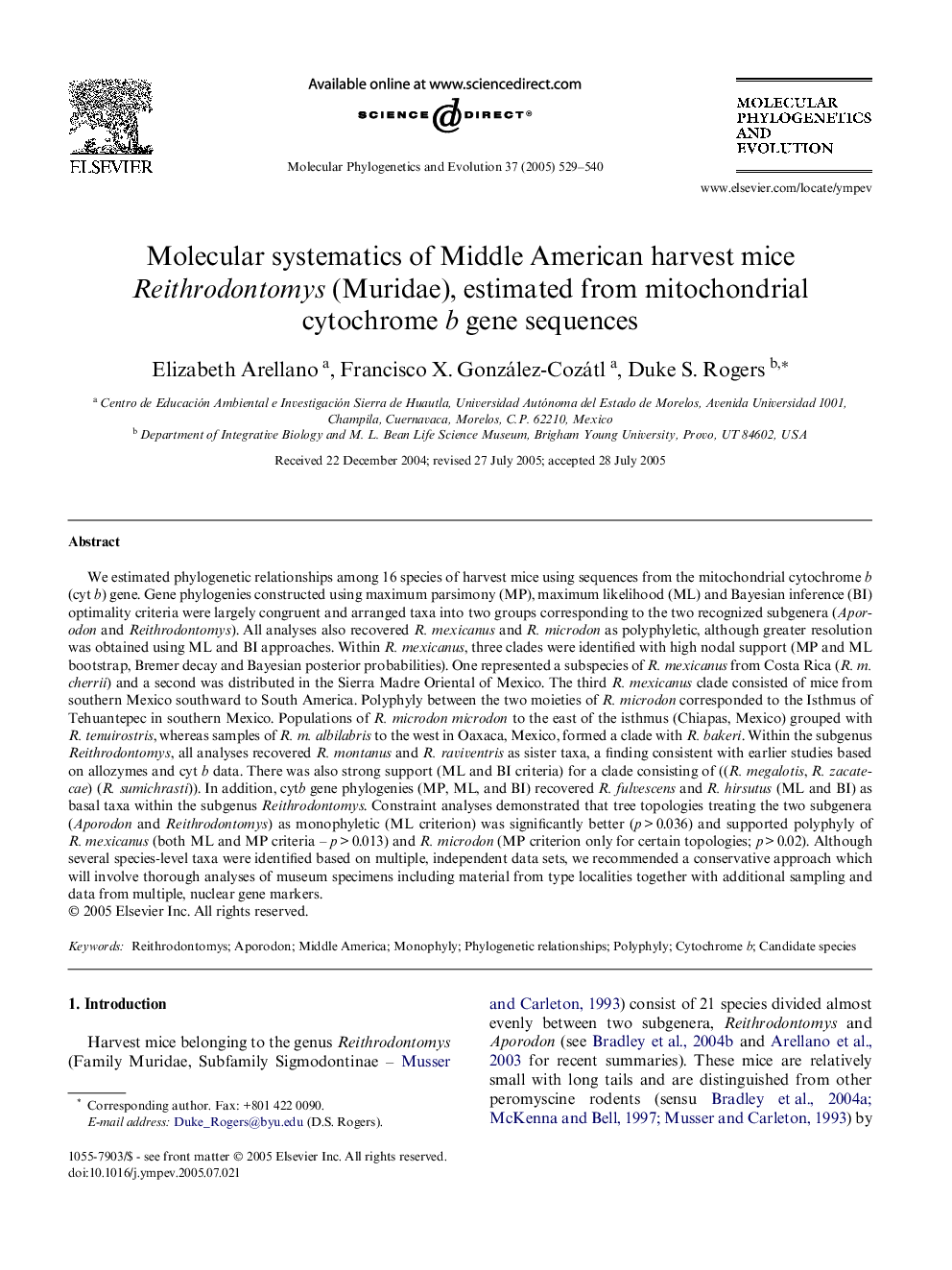| Article ID | Journal | Published Year | Pages | File Type |
|---|---|---|---|---|
| 9143100 | Molecular Phylogenetics and Evolution | 2005 | 12 Pages |
Abstract
We estimated phylogenetic relationships among 16 species of harvest mice using sequences from the mitochondrial cytochrome b (cyt b) gene. Gene phylogenies constructed using maximum parsimony (MP), maximum likelihood (ML) and Bayesian inference (BI) optimality criteria were largely congruent and arranged taxa into two groups corresponding to the two recognized subgenera (Aporodon and Reithrodontomys). All analyses also recovered R. mexicanus and R. microdon as polyphyletic, although greater resolution was obtained using ML and BI approaches. Within R. mexicanus, three clades were identified with high nodal support (MP and ML bootstrap, Bremer decay and Bayesian posterior probabilities). One represented a subspecies of R. mexicanus from Costa Rica (R. m. cherrii) and a second was distributed in the Sierra Madre Oriental of Mexico. The third R. mexicanus clade consisted of mice from southern Mexico southward to South America. Polyphyly between the two moieties of R. microdon corresponded to the Isthmus of Tehuantepec in southern Mexico. Populations of R. microdon microdon to the east of the isthmus (Chiapas, Mexico) grouped with R. tenuirostris, whereas samples of R. m. albilabris to the west in Oaxaca, Mexico, formed a clade with R. bakeri. Within the subgenus Reithrodontomys, all analyses recovered R. montanus and R. raviventris as sister taxa, a finding consistent with earlier studies based on allozymes and cyt b data. There was also strong support (ML and BI criteria) for a clade consisting of ((R. megalotis, R. zacatecae) (R. sumichrasti)). In addition, cytb gene phylogenies (MP, ML, and BI) recovered R. fulvescens and R. hirsutus (ML and BI) as basal taxa within the subgenus Reithrodontomys. Constraint analyses demonstrated that tree topologies treating the two subgenera (Aporodon and Reithrodontomys) as monophyletic (ML criterion) was significantly better (p > 0.036) and supported polyphyly of R. mexicanus (both ML and MP criteria - p > 0.013) and R. microdon (MP criterion only for certain topologies; p > 0.02). Although several species-level taxa were identified based on multiple, independent data sets, we recommended a conservative approach which will involve thorough analyses of museum specimens including material from type localities together with additional sampling and data from multiple, nuclear gene markers.
Related Topics
Life Sciences
Agricultural and Biological Sciences
Ecology, Evolution, Behavior and Systematics
Authors
Elizabeth Arellano, Francisco X. González-Cozátl, Duke S. Rogers,
